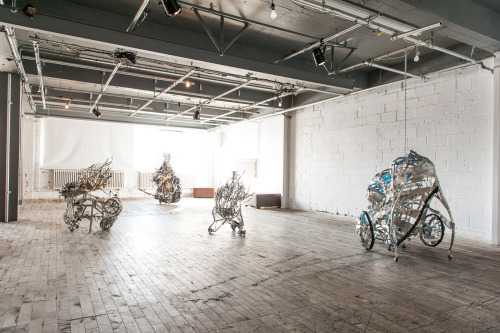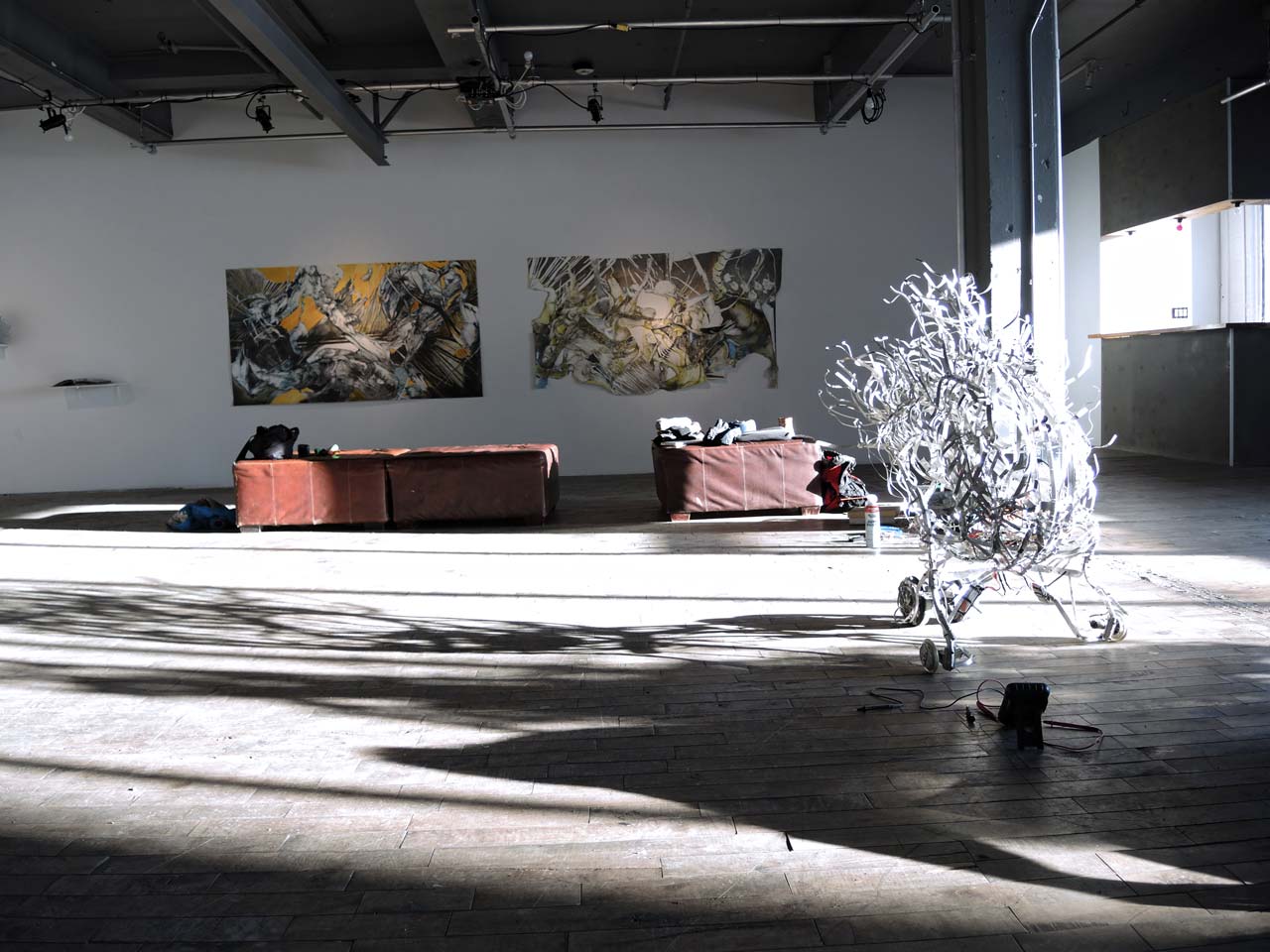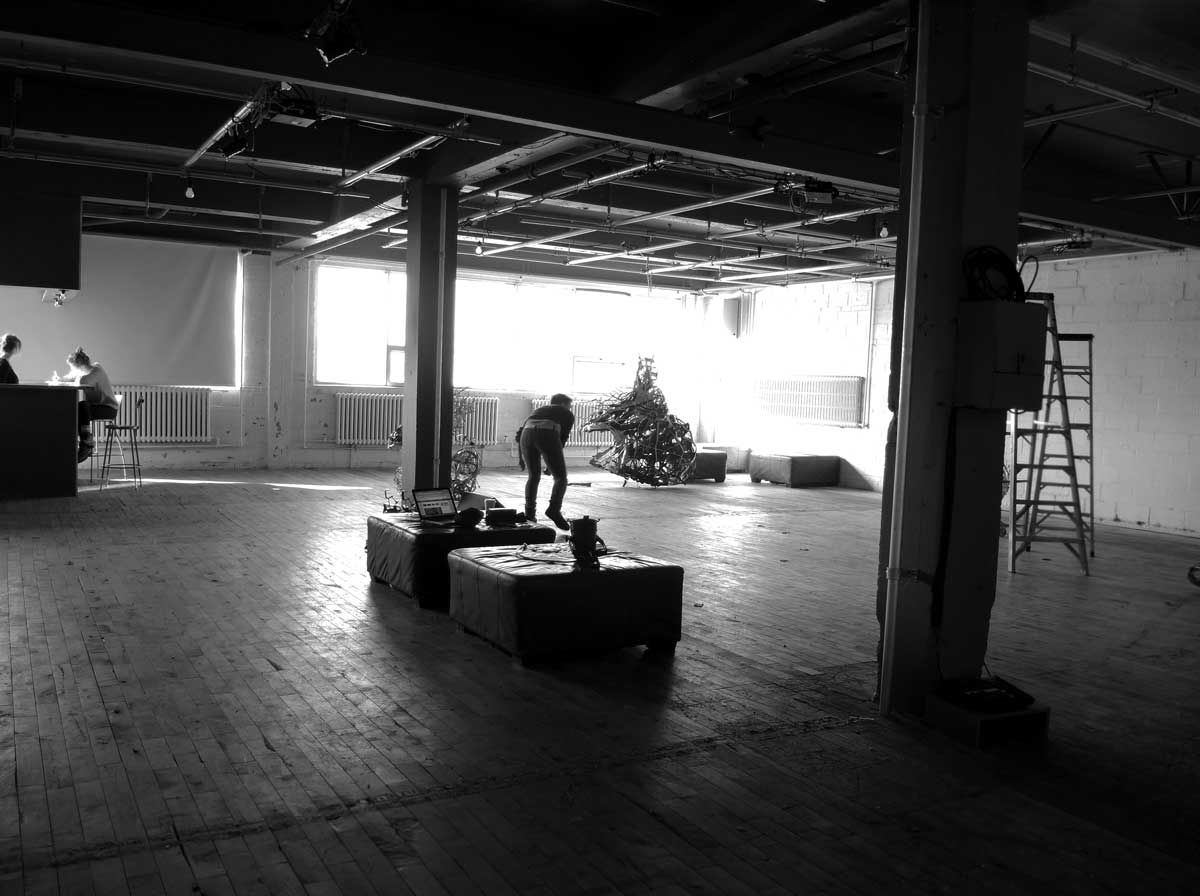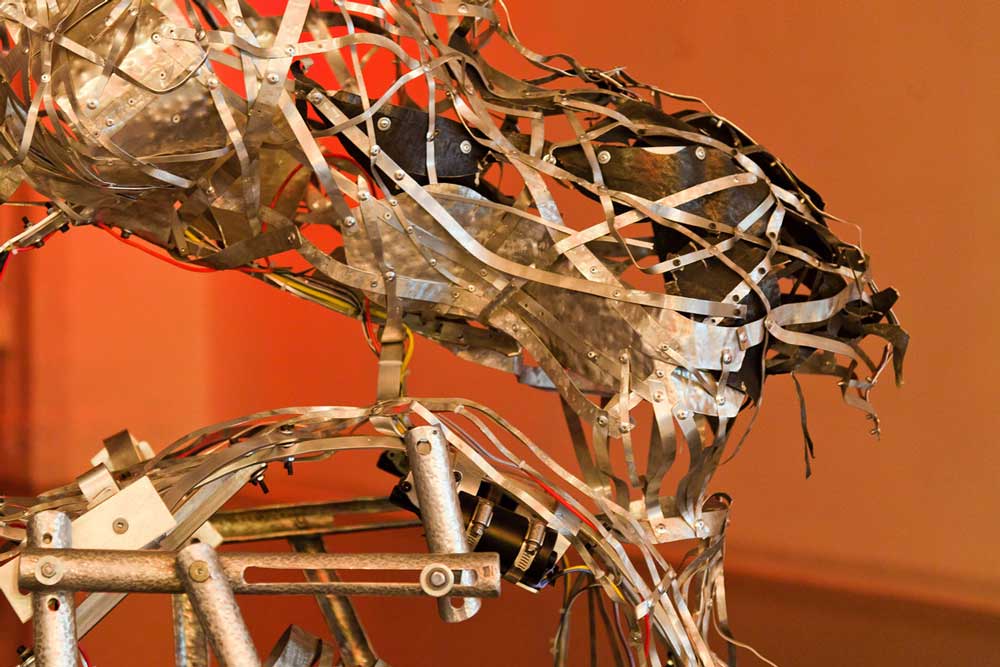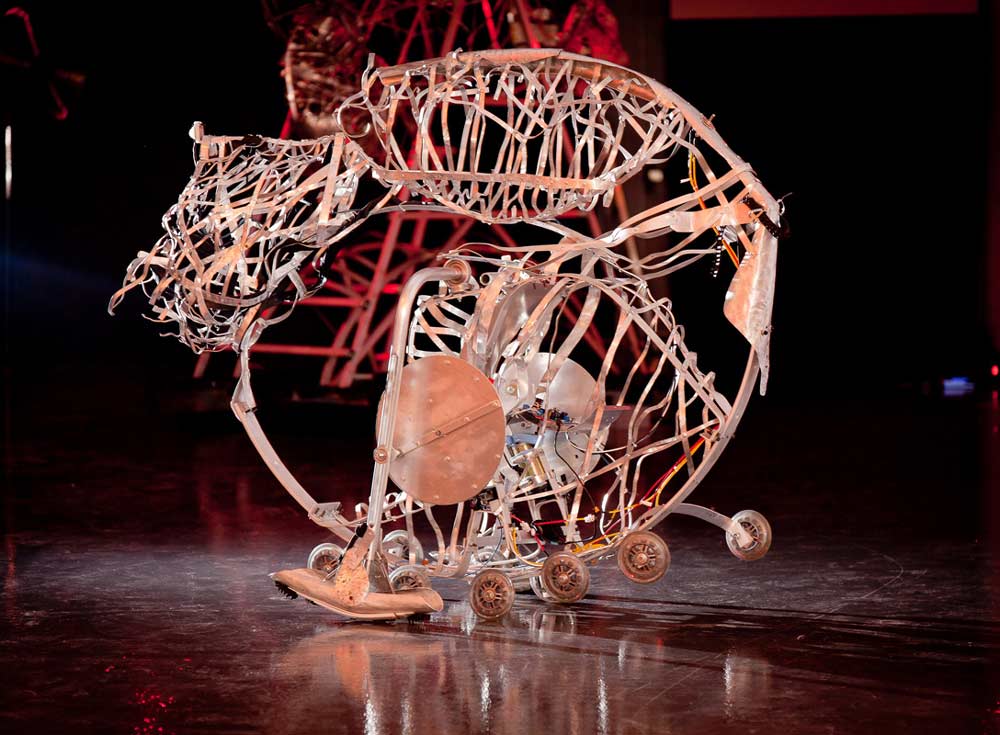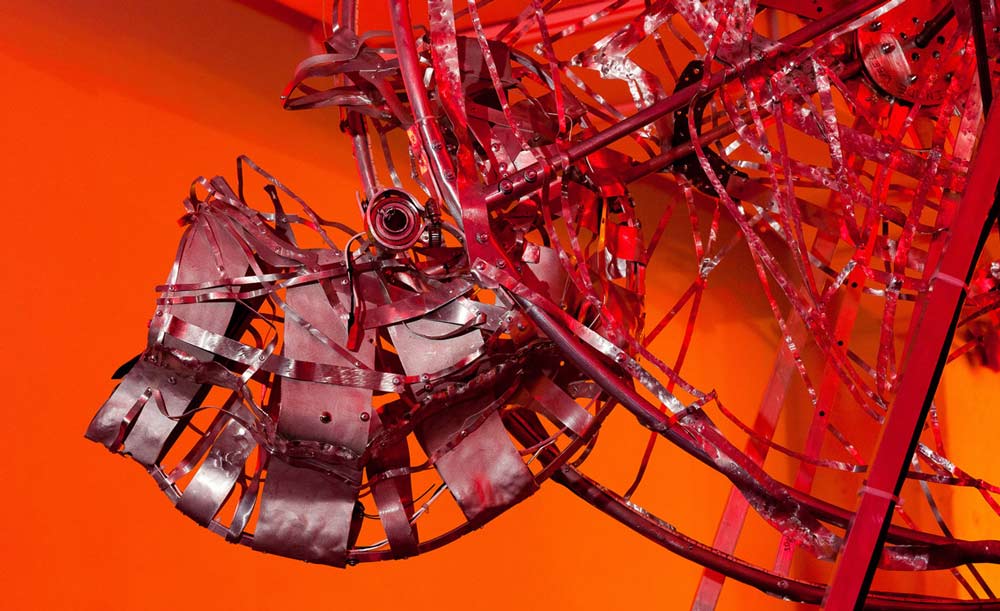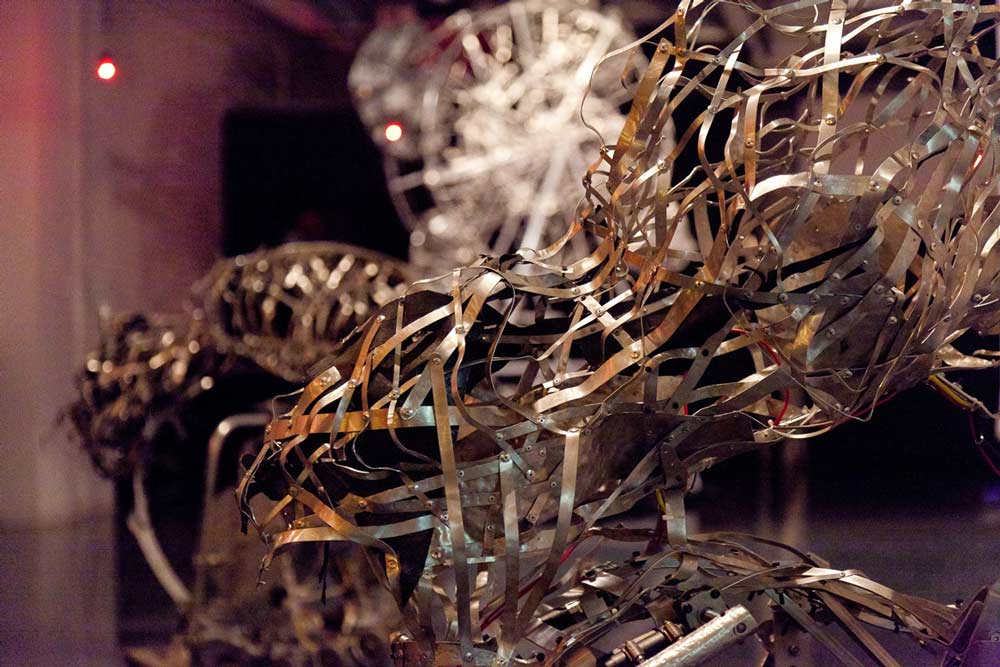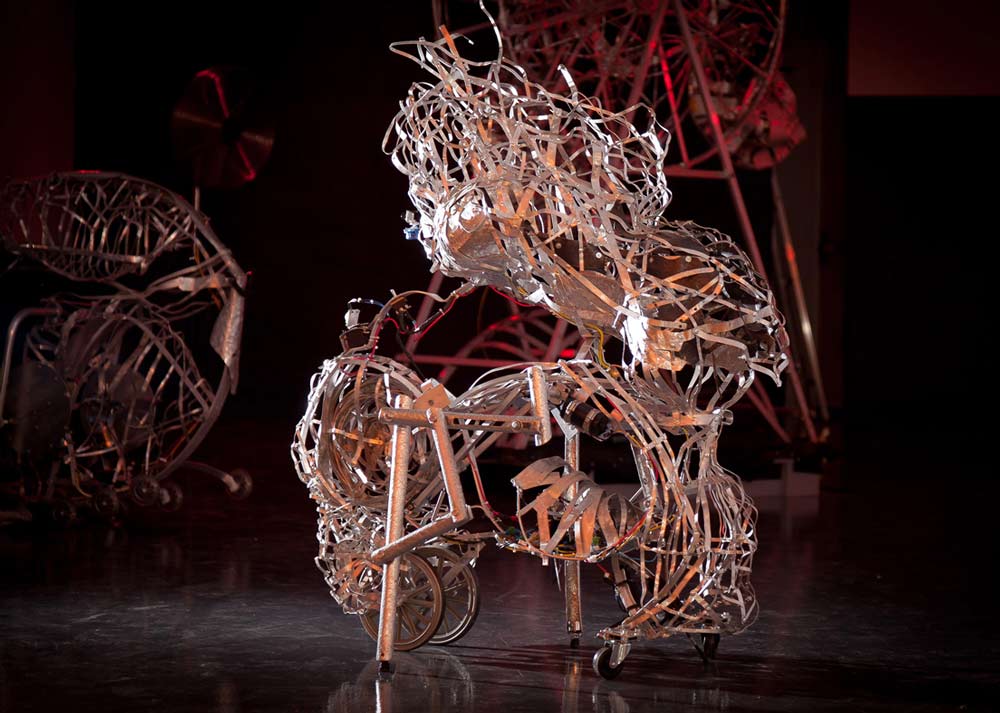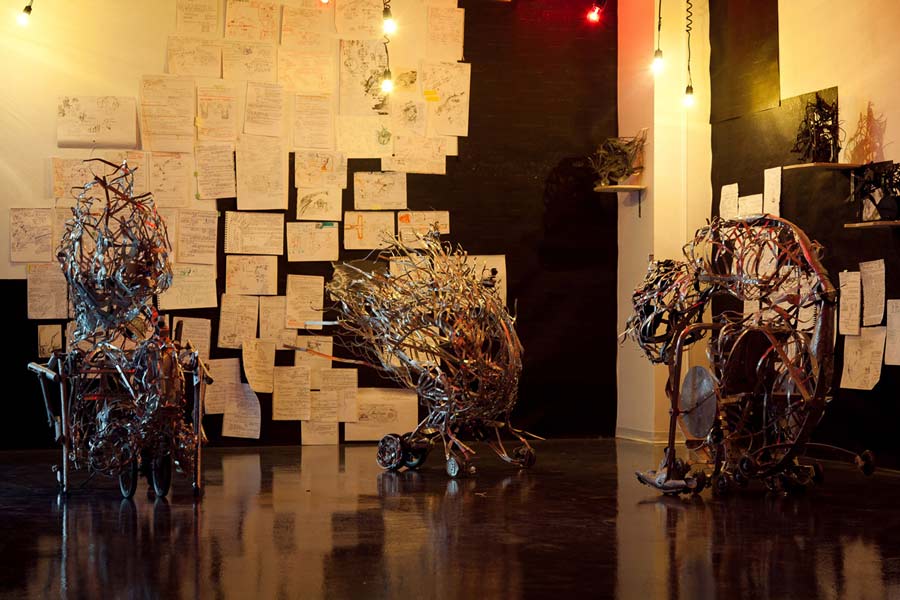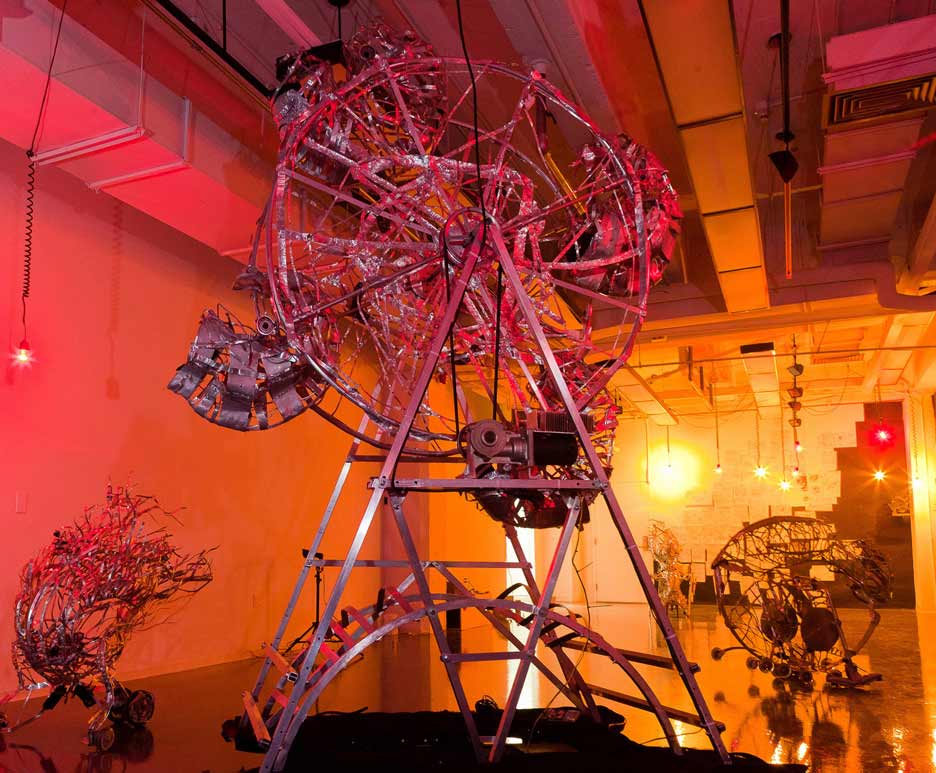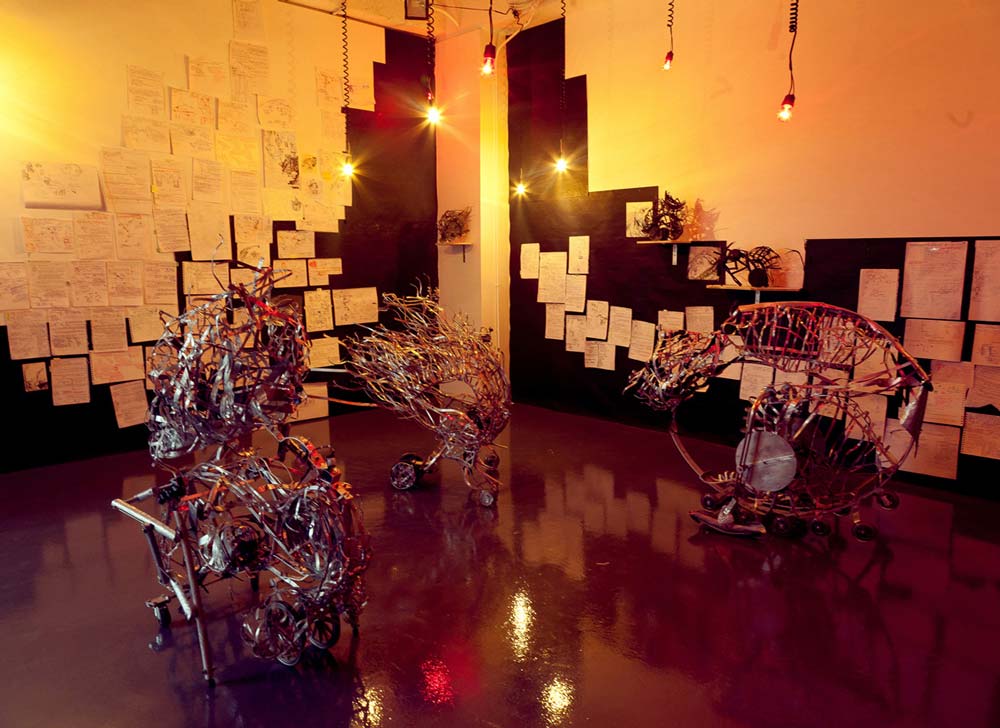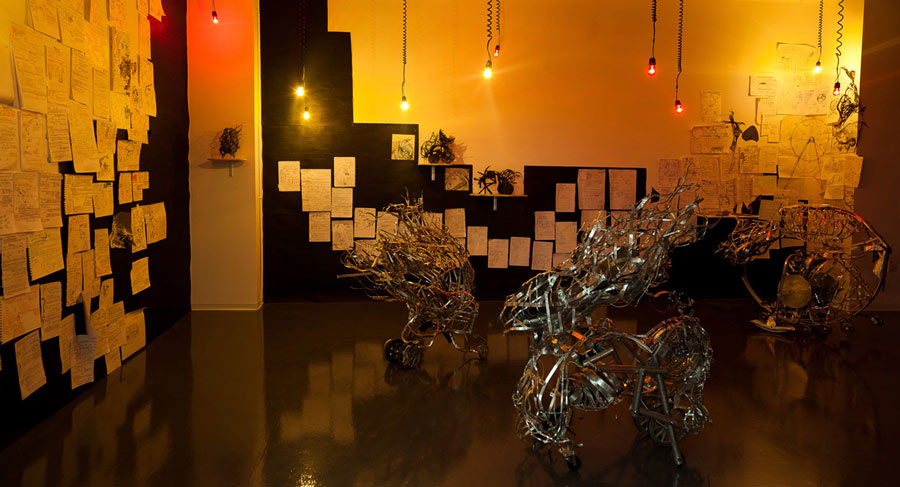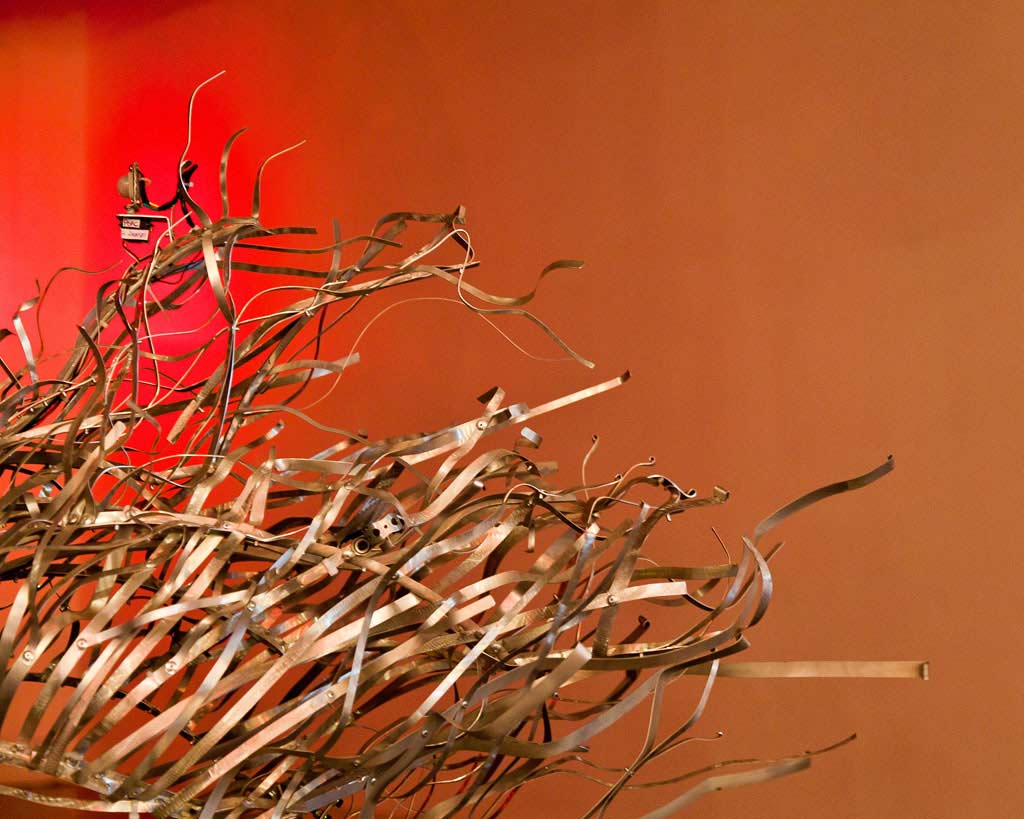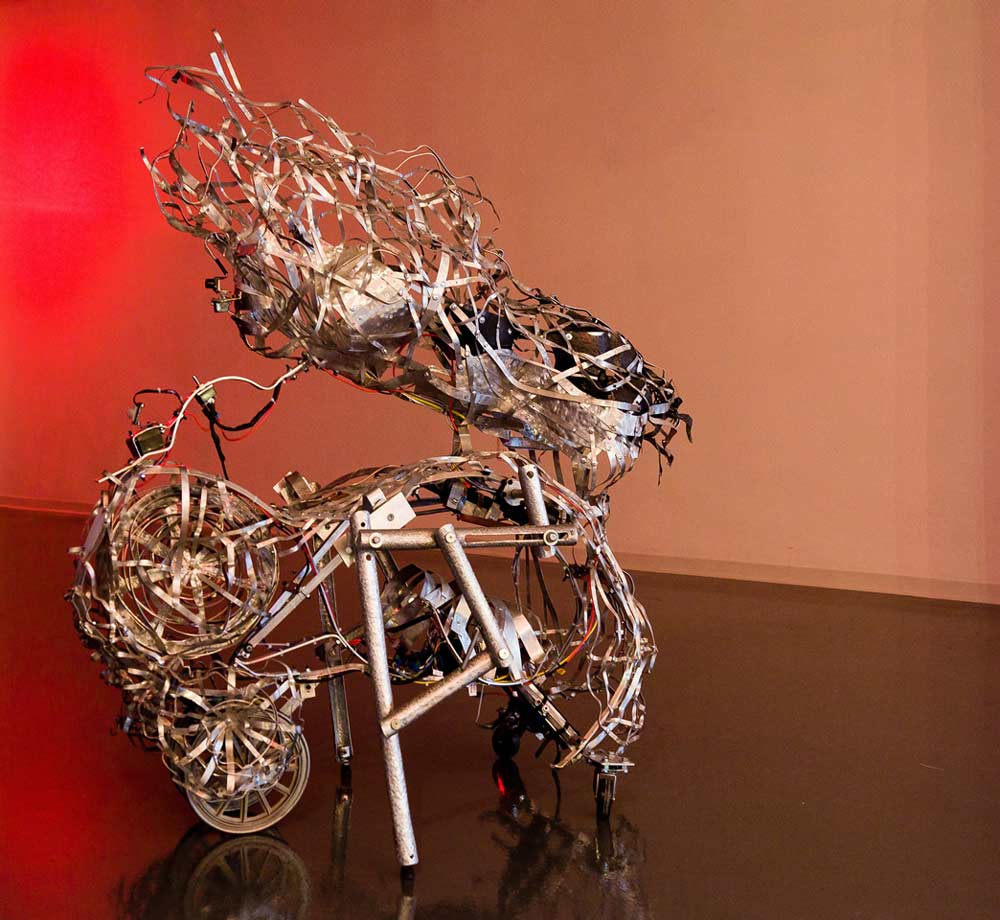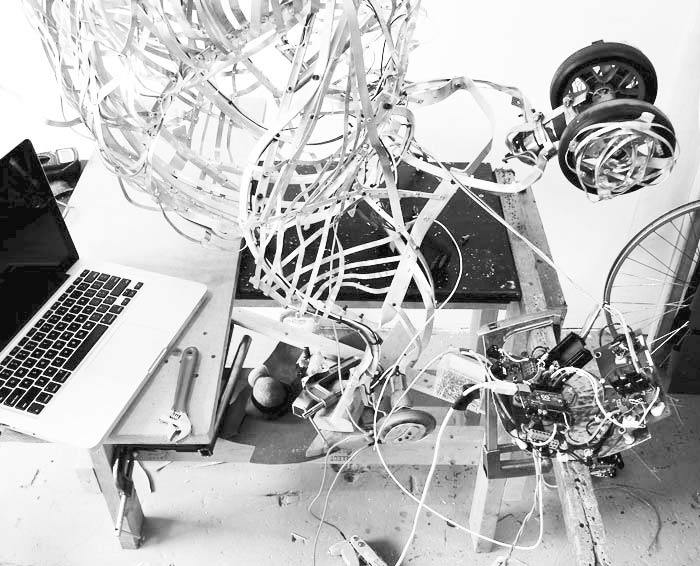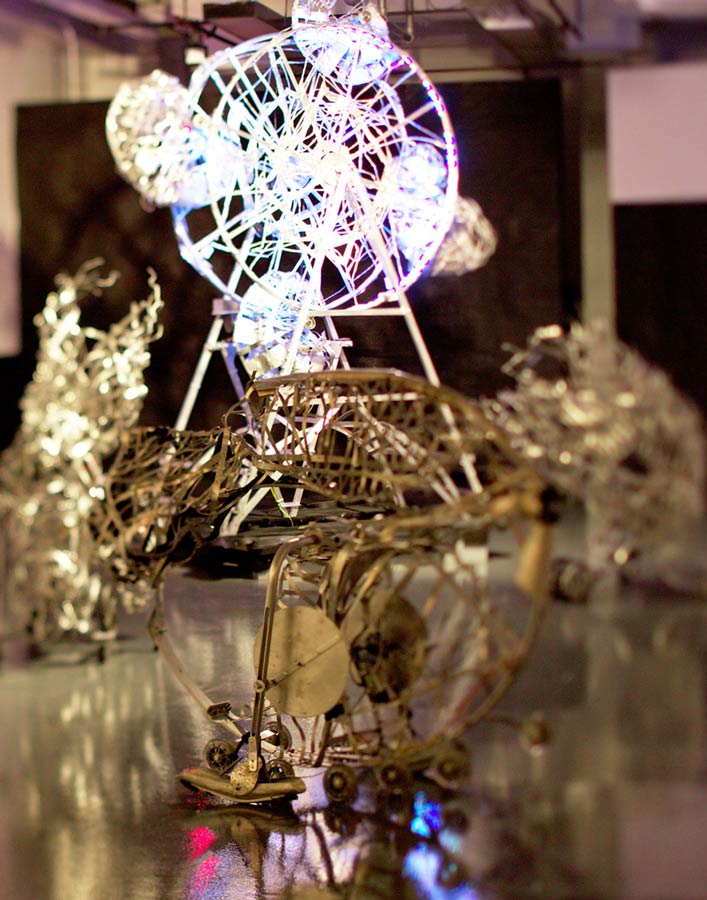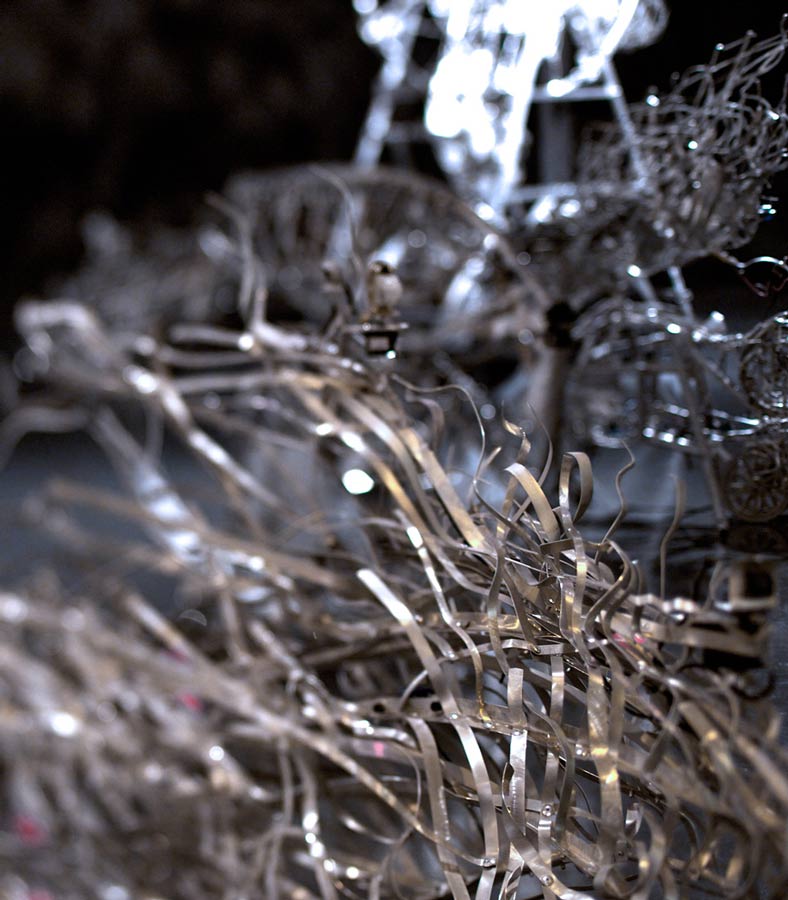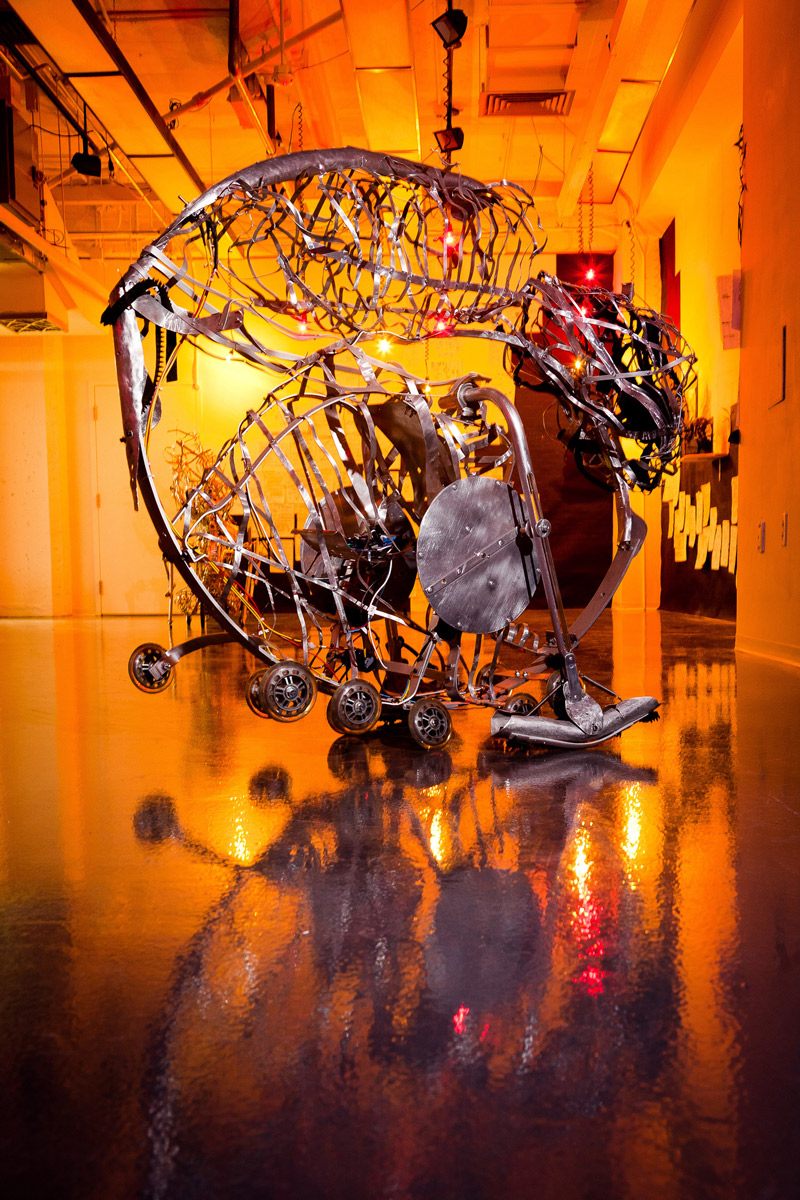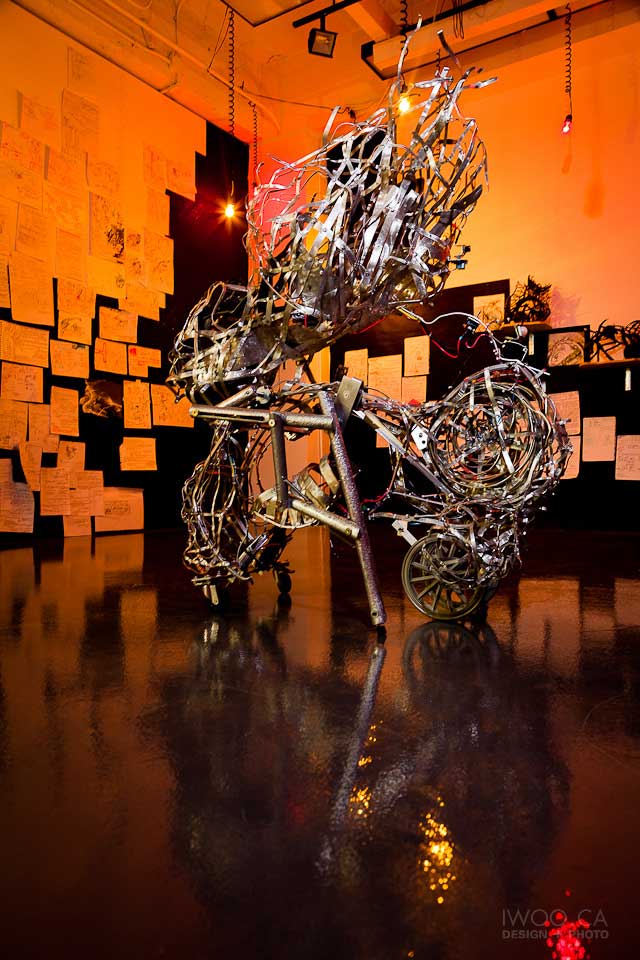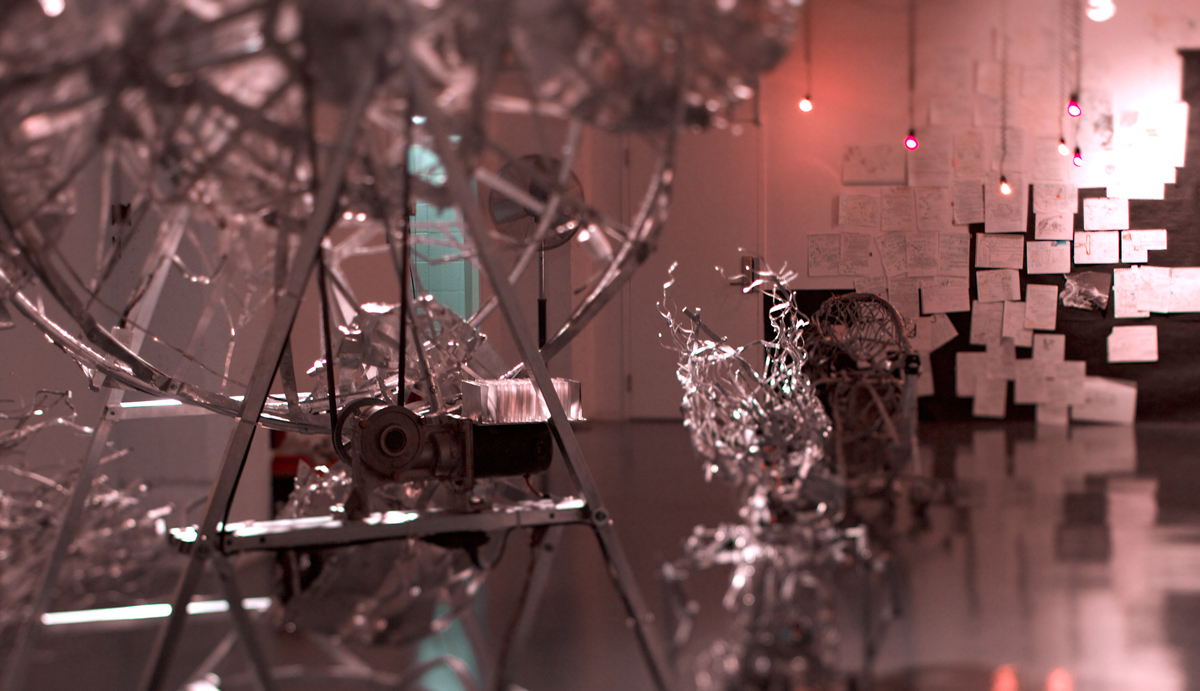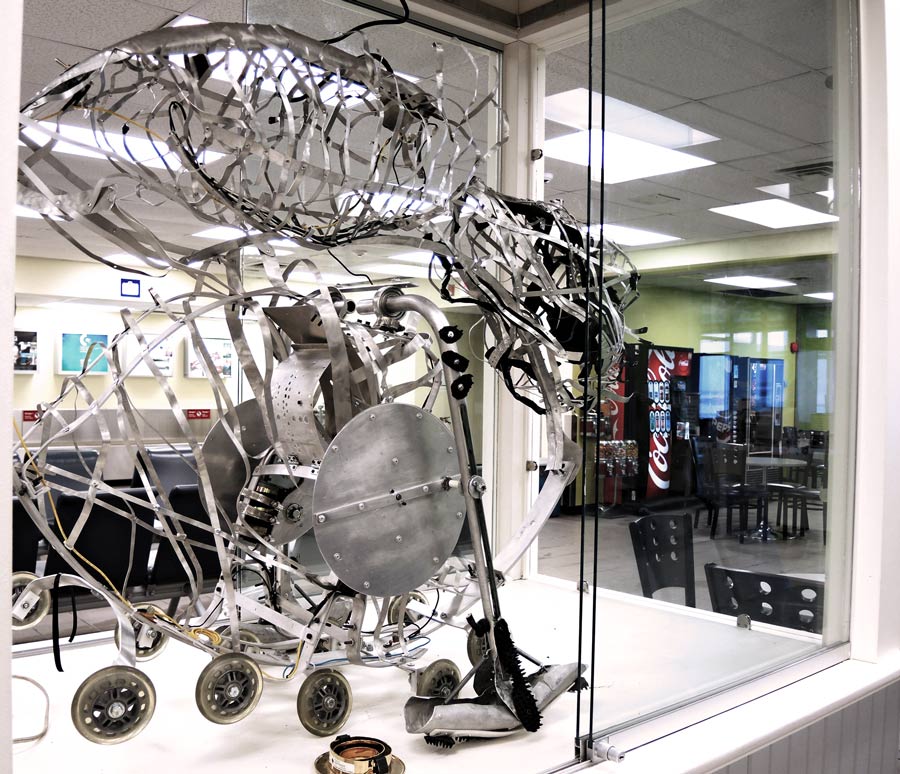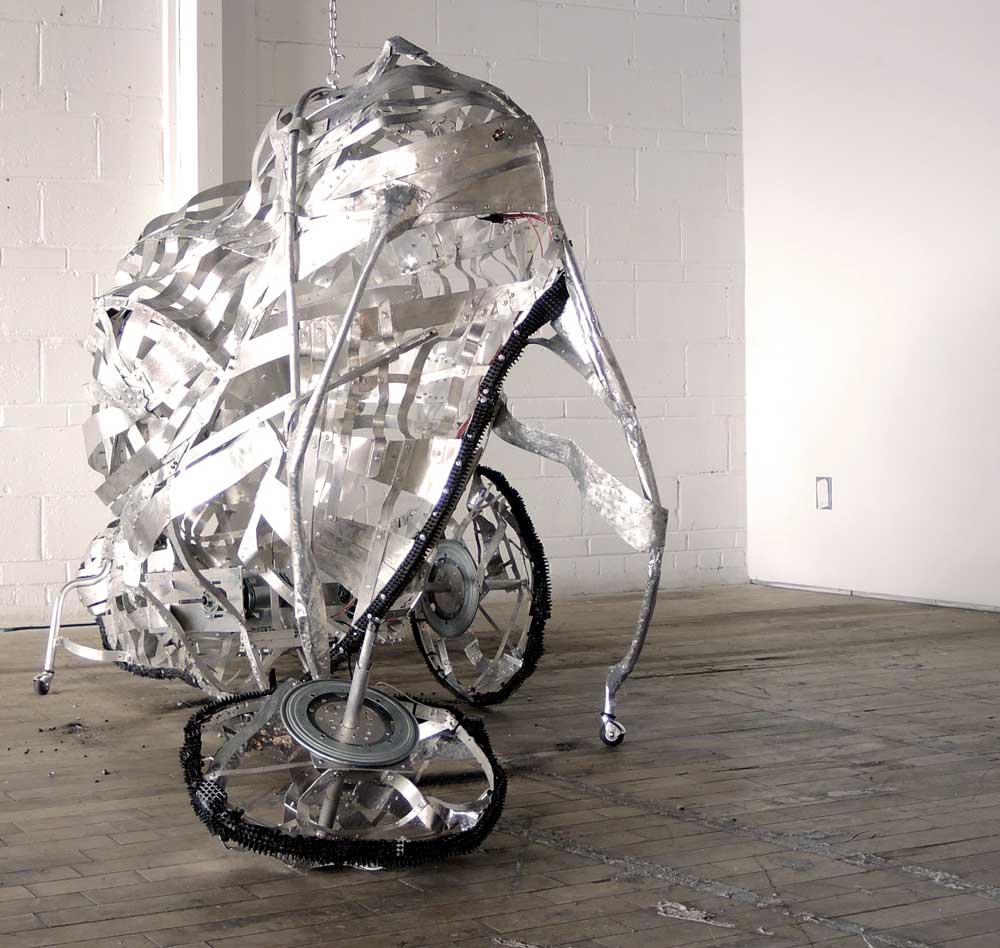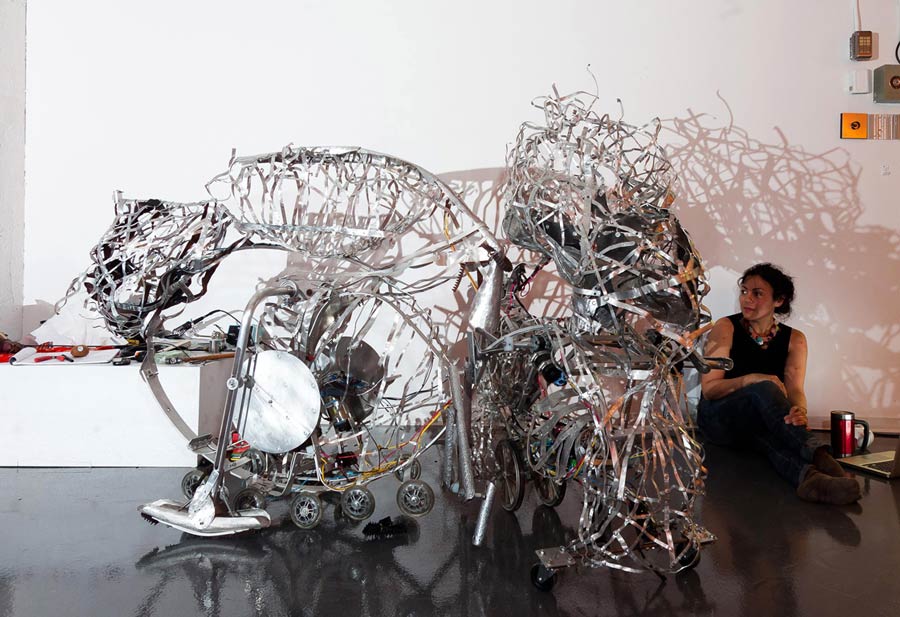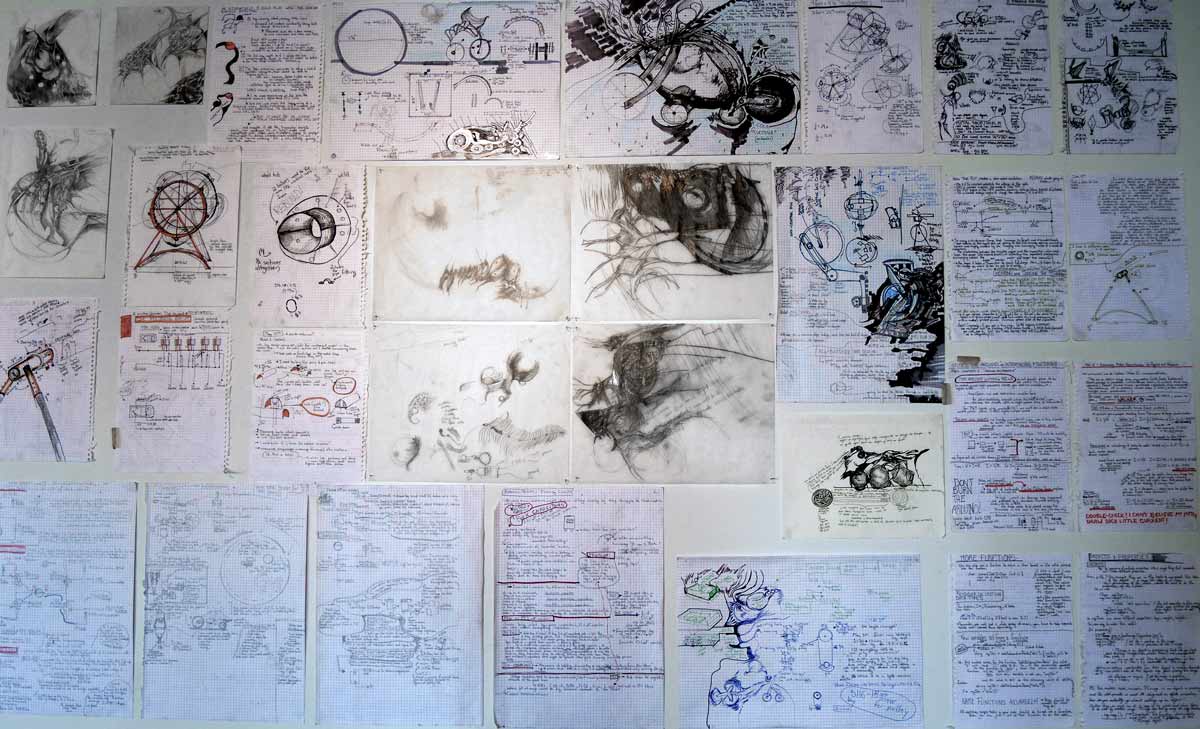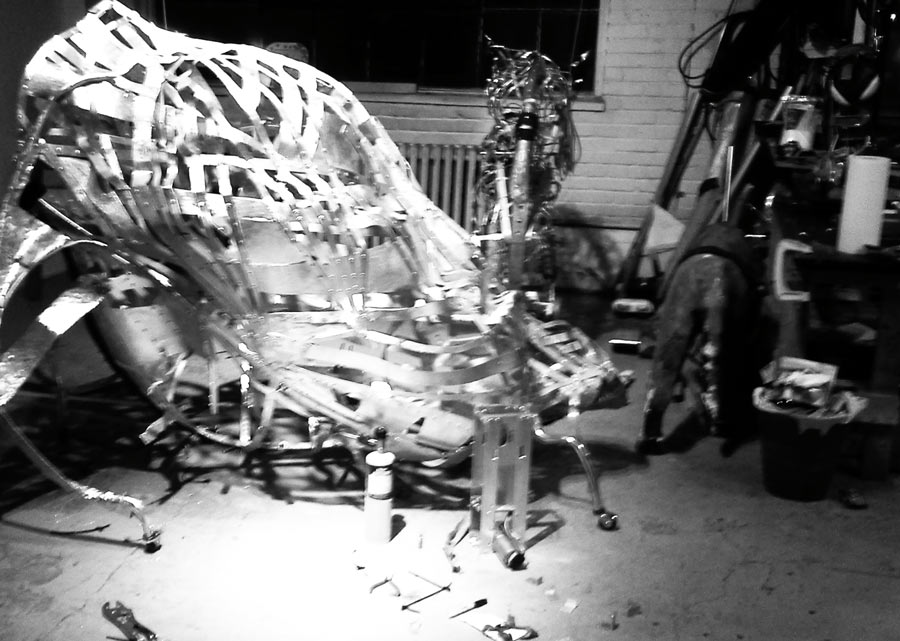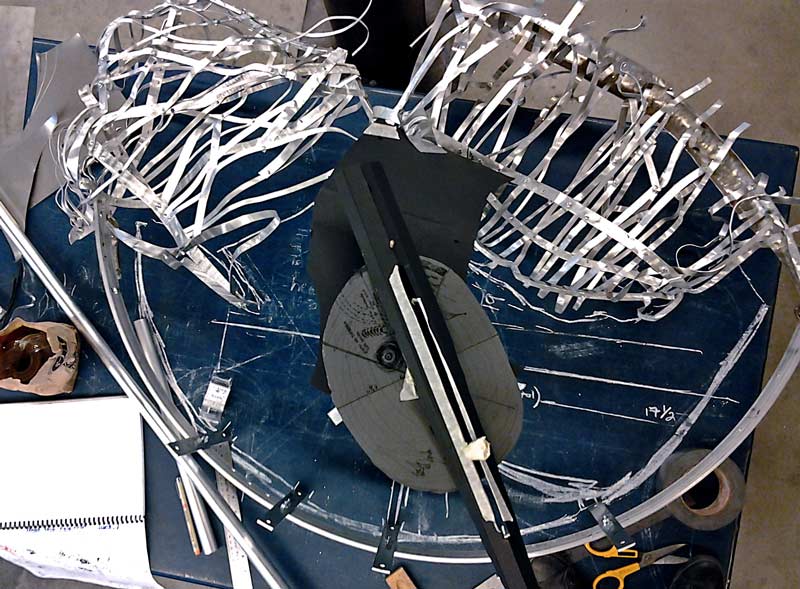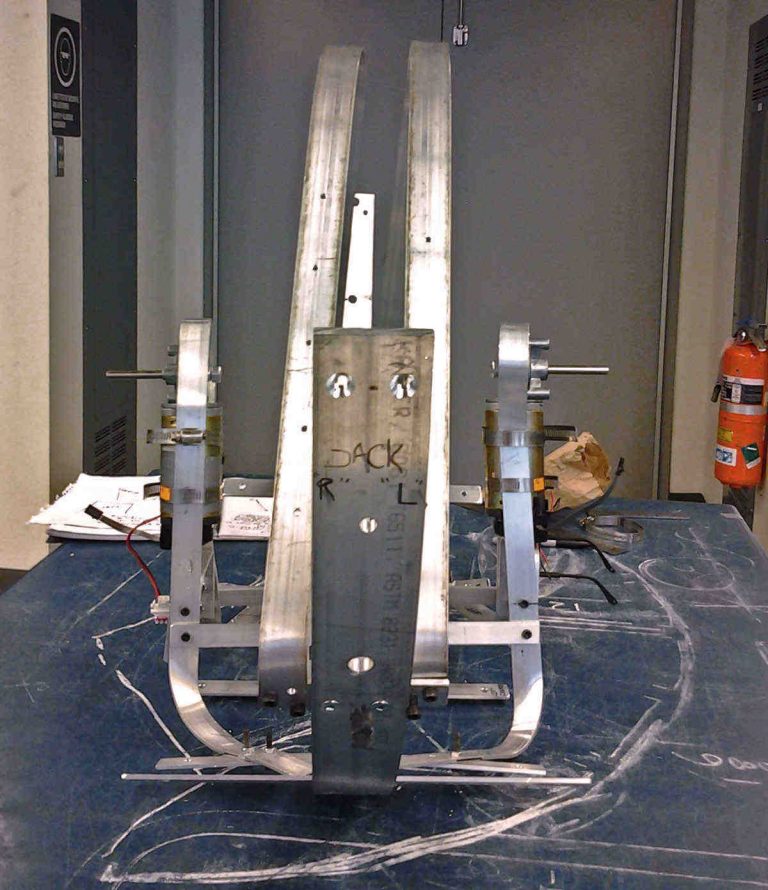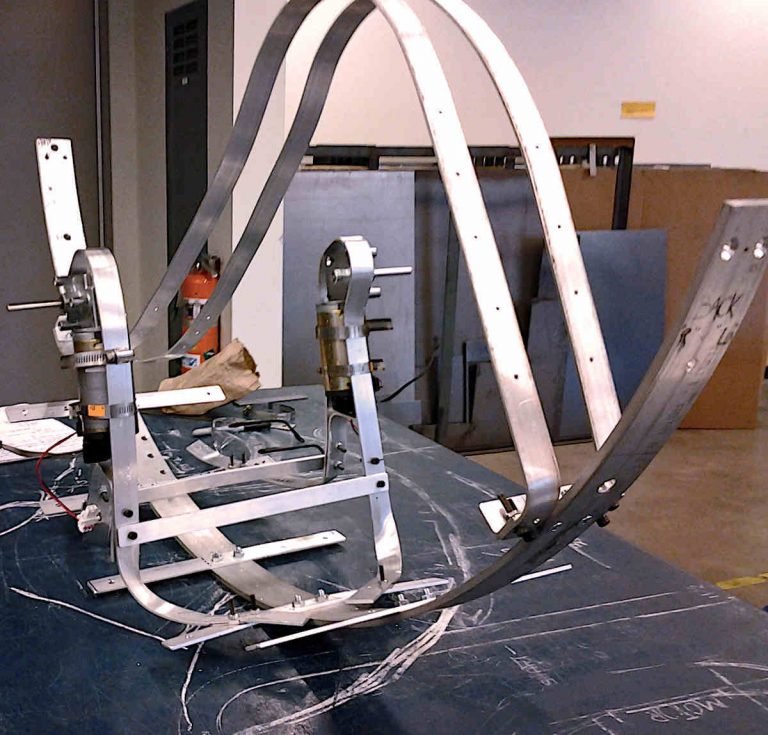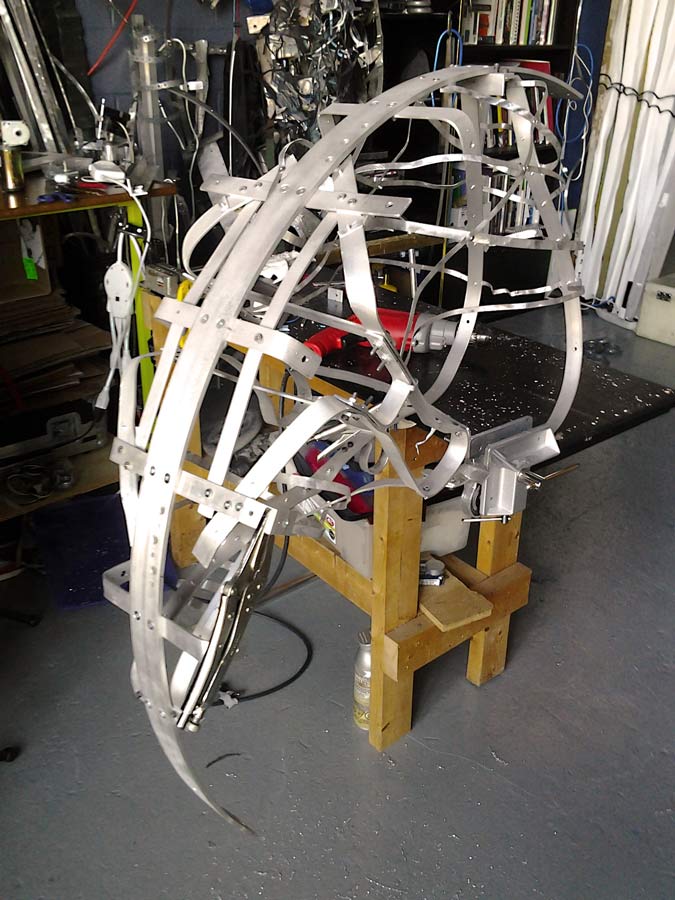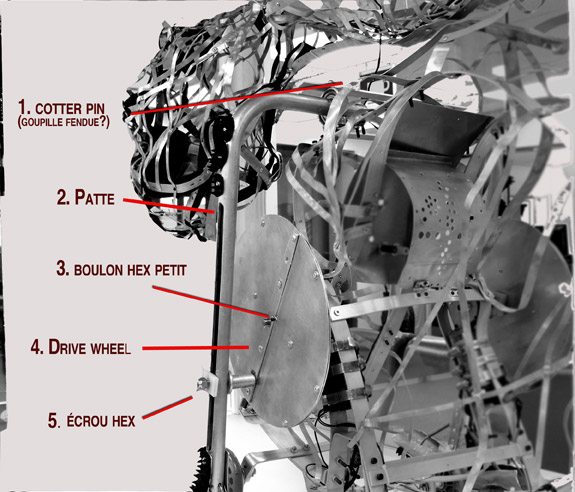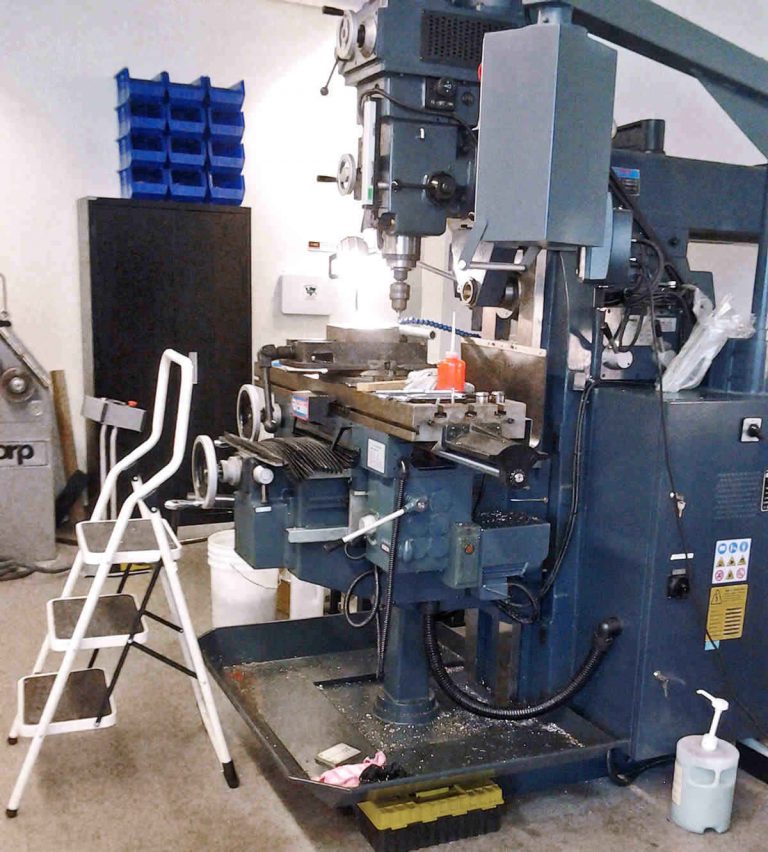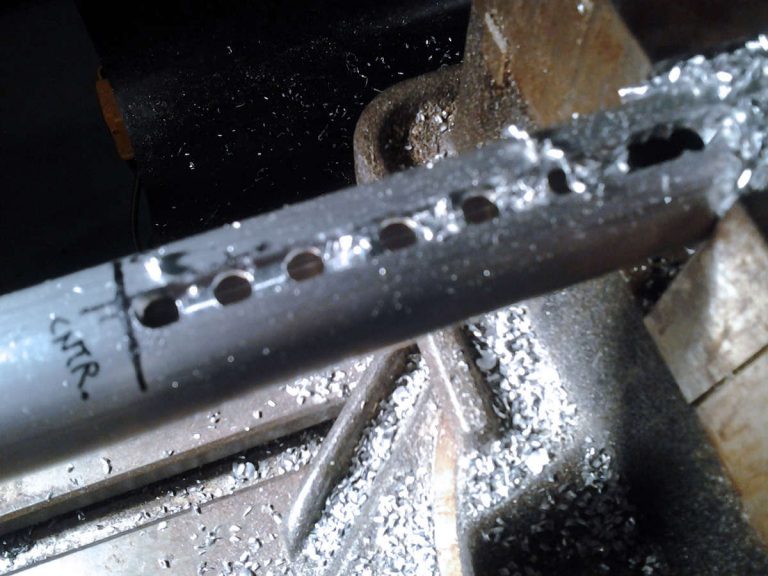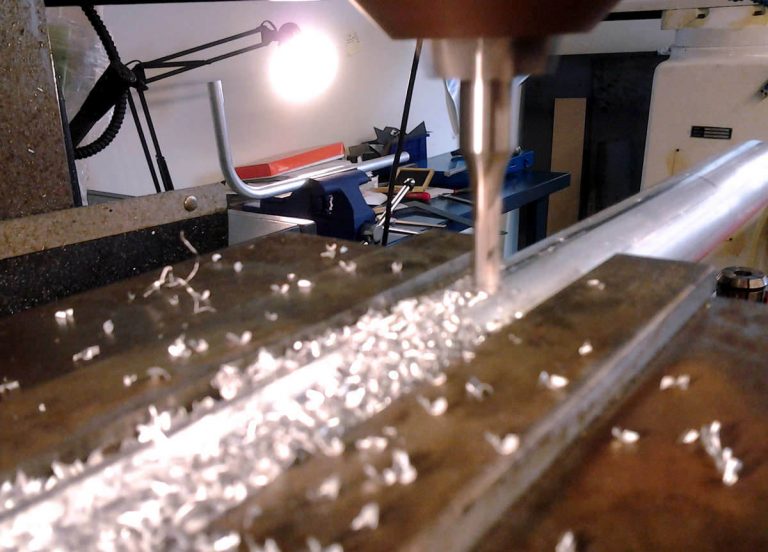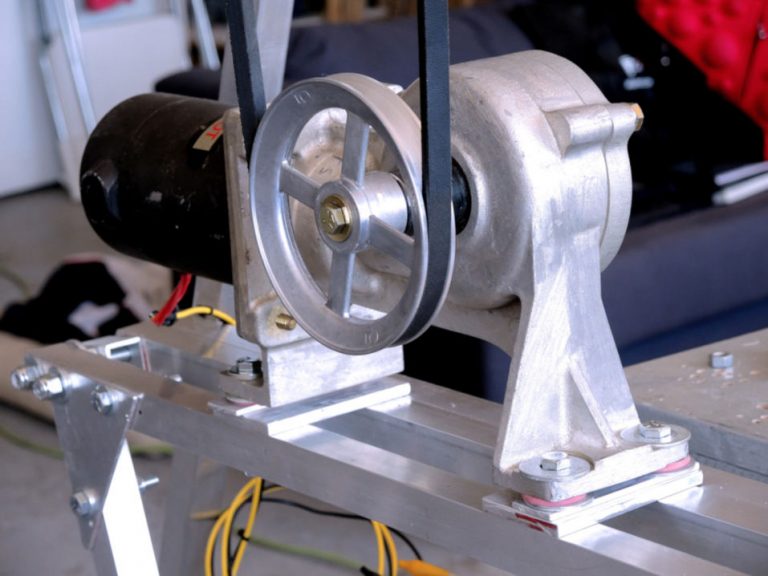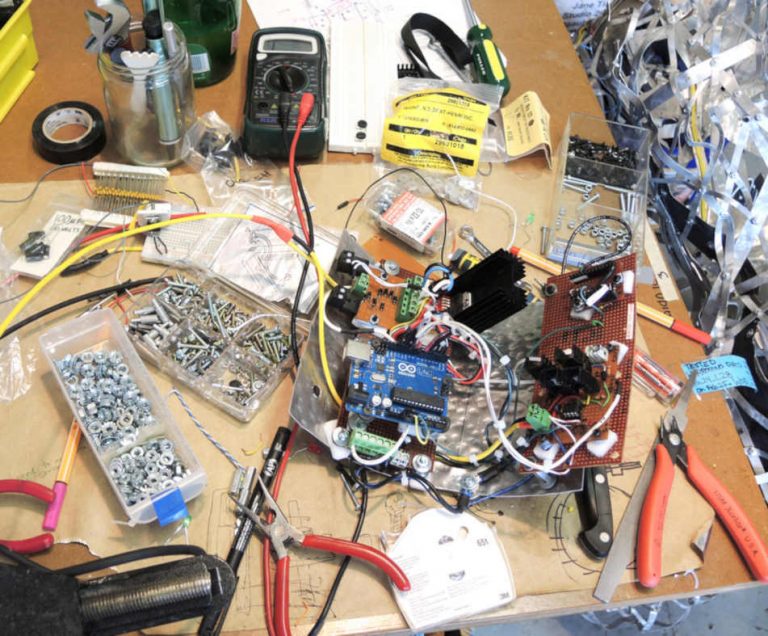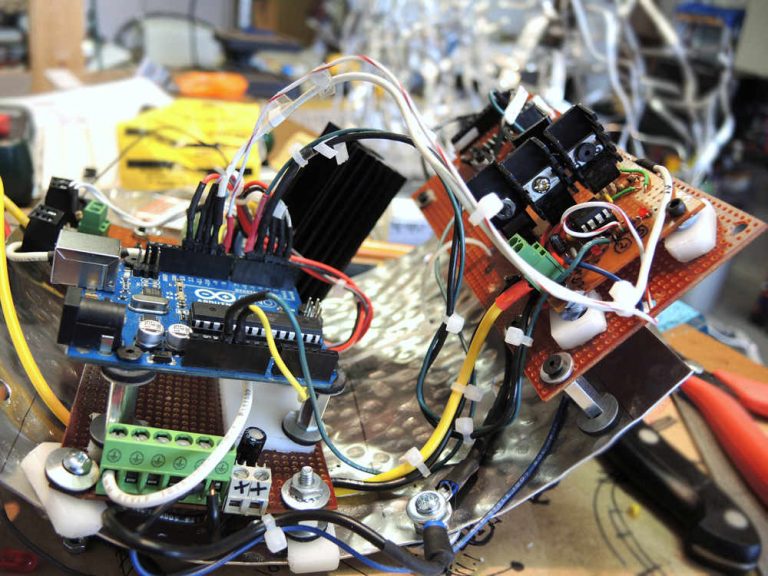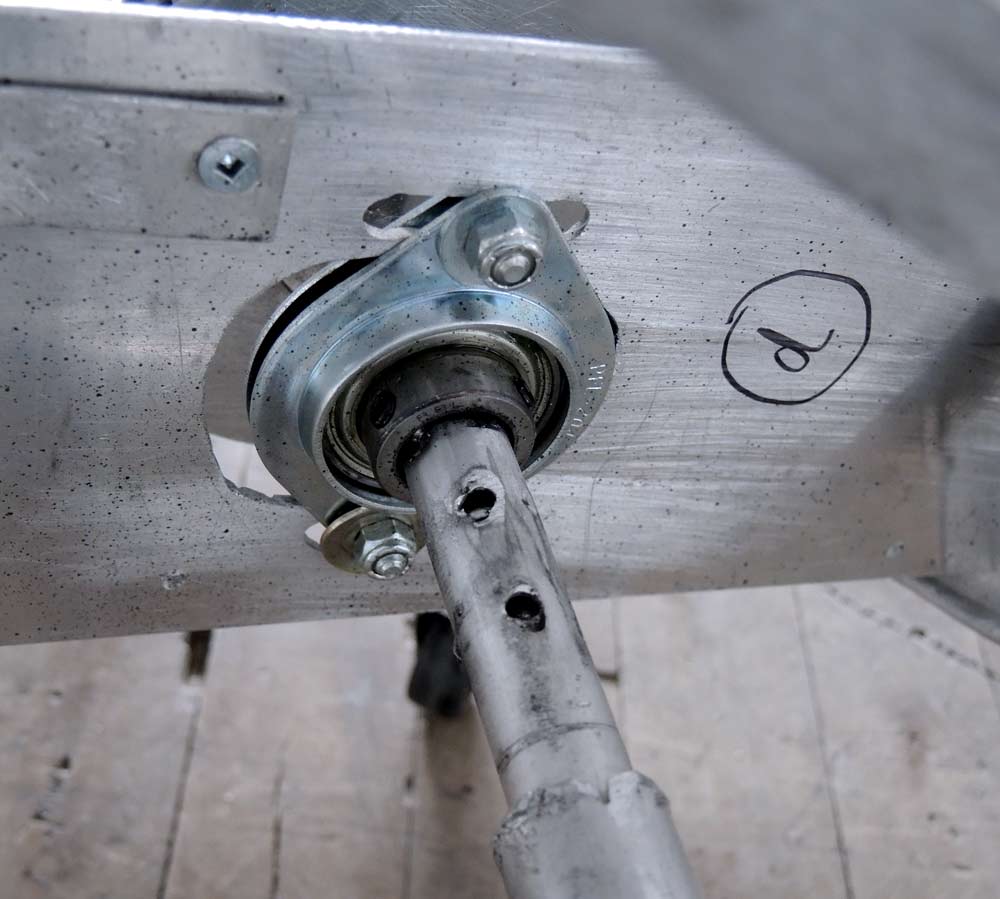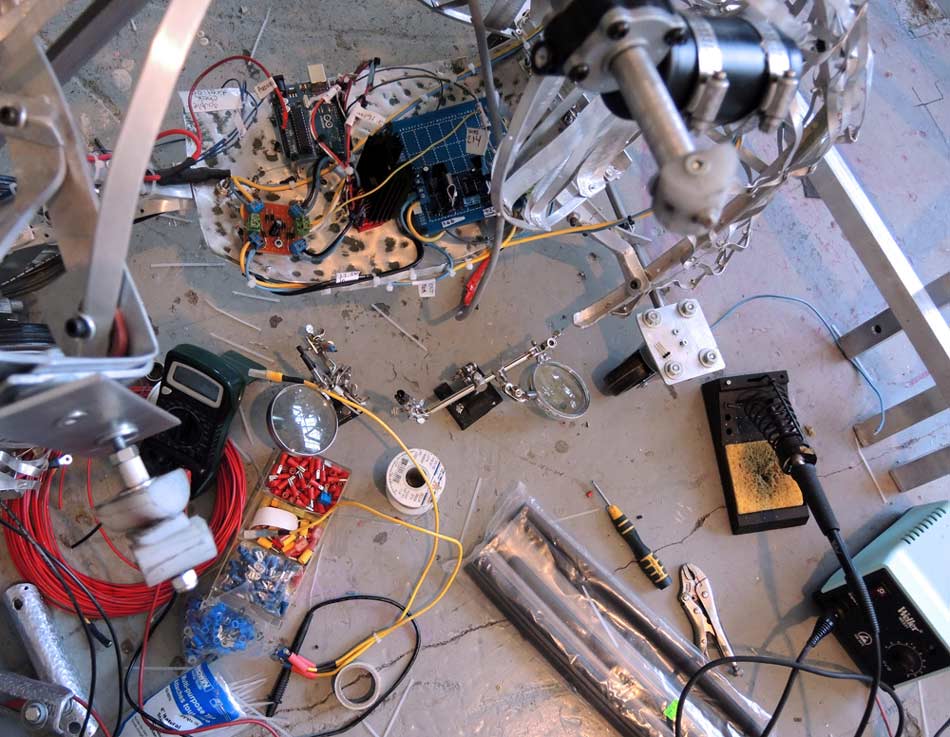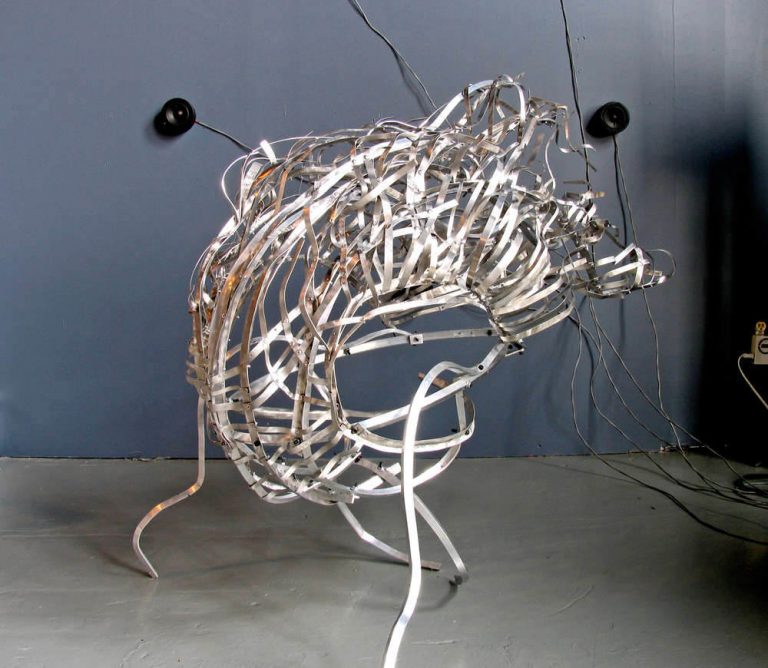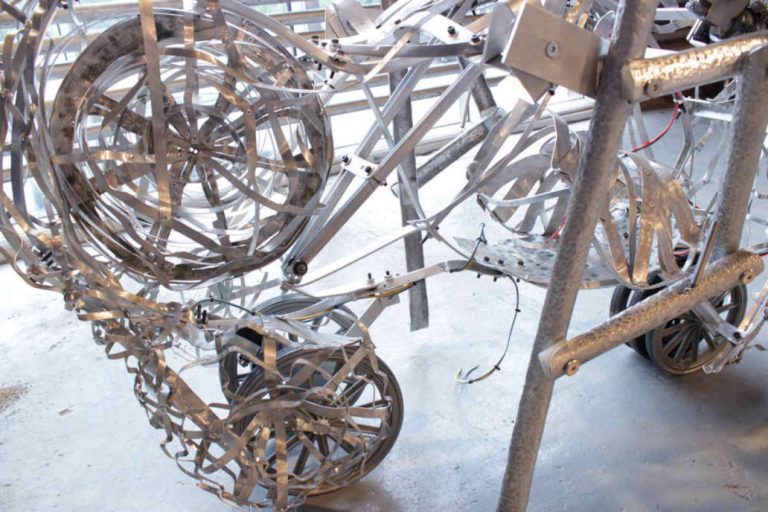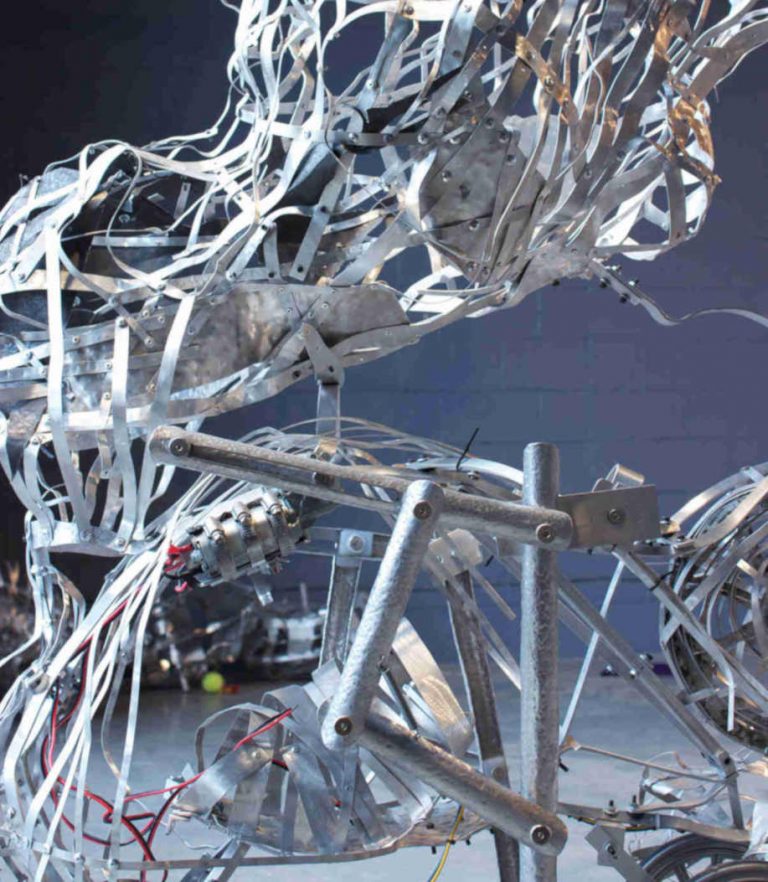Humo, Leche y Miel (Smoke, Milk and Honey) began as my MFA thesis project. It consisted of four robots and a ferris wheel. the robots, (nick-named, “Walker,” “Porcupine”, “Blob” and “Rocker”) ranged from four to five feet in height, three to five feet in length. The ferris wheel was ten feet tall.
For me, beauty is never a surface frippery, it is always a result of, and intensely inter-connected with, whatever system it arises from. And I’m not interested in nailing down what constitutes beauty. But I am interested in why my forms are relentlessly organic and zoomorphic. What are the implications of ‘Beauty’, or ‘Ugliness’ when working with robotics and new media, which are functional and interactive? Why do I seem to follow a certain aesthetic form? This was central to this project.
I had became drawn to 18th and 19th century aesthetic theories, and with how they were applied to the English landscape. I loved Lancelot, ‘Capability’ Brown, though in his way – ripping up ancient groves, flattening insufficiently picturesque villages, flooding pastures to create fake lakes, ruins, and carefully orchestrated vistas, he wreaked as much havoc as a golfcourse on the landscape. During his lifetime (1716 – 1783) he, and other landscape architects, were hired by the landed gentry and aristocracy to invent the bucolic myth of the ‘natural’ English landscape on their great estates, at the same time that their factories, large-scale mining, marsh-draining, canal-building, urbanization, enclosure, and de-forestation were beginning the cycles of pollution, ecological disaster, and disappearance of traditional husbandry in the rest of the UK.
I had patiently waded through dialogues on qualities of ‘smoothness’ and ‘roughness’, on wildness, natural beauty and the sublime… but nowhere is there mention of the broader aesthetic sense of how the ‘natural’ manufactured landscapes of the gentry sat against the ‘unnatural’ landscape of industrial manufacturing, bolstered by their networks of military and economic imperialism. If this was the model for thinking through beauty and pleasure I can see why it got discarded. Or, as Dave Beech wrote, “It is not that babies, flowers and diamonds have stopped looking good. The critique of beauty is never a critique of beautiful objects but always of ideas, ideologies, social practices and cultural hierarchies.”(1)
In all this, to a huge extent, our arguments hinge on how much we’re willing to take in of the world around us. To what do we limit our vision?
(1) Dave Beech, Introduction. Beauty. London: 2009 Whitechapel & MIT press. p. 12
“Walker” and “Rocker” were propelled by legs, like the oars on a canoe. The “Blob” had purposely misshapen wheels. It never managed to roll its own weight, and was suspended from the ceiling.
I built them to seem fluid, hermaphroditic, organic, but without hiding the clumsy mechanical and hand-made electronic elements. They were driven by various surplus gear motors and powered by rechargeable batteries
“Rocker” was my favorite, it rocked in an unpredictable arc, navigating blindly, working itself out of corners, even though it didn’t contain a micro-controller or sensors of any kind. Its complex behaviours were due to its shape and slight asymmetry.
Simple sensors helped “Porcupine” and “Walker” navigate, but their movements were nowhere near as complex or robust. Porcupine’s tips had tiny vibrating motors that caused it to shake and clack loudly.
The ferris wheel turned very slowly. Instead of regular carriages, it had four aluminum forms that roughly resemble crustaceans or maggots… (see ferris wheel)
The pieces –
Walker
aluminum, paper, surplus motors, hardware,
circuitry, sensors, software –
4′ tall x 2′ wide x 4′ long
Porcupine
aluminum, motors, vibrating motors, hardware, circuitry, sensors and software – 47”tall x 29” wide x 55” long
Blob
aluminum, rubber, hardware, led’s, motors – 5′ tall x 7′ long x 38” wide.
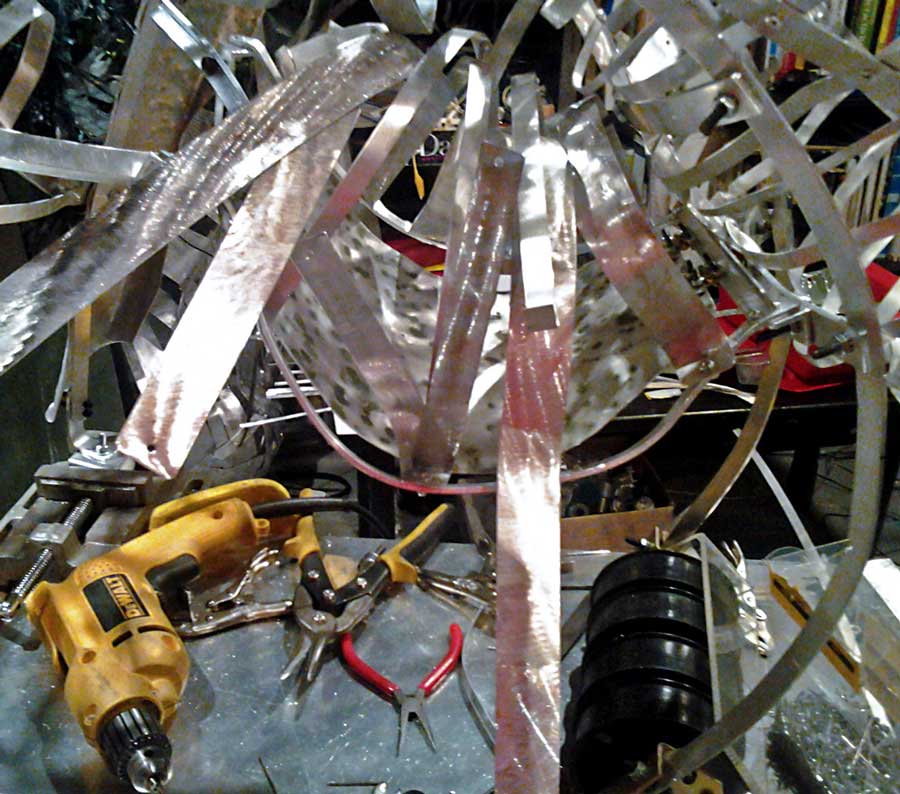
Rocker
aluminum, motors, hardware, circuitry – 44” tall x 26” wide x 55” long
